The Modern War Institute at West Point—a sort of think tank chaired by Mark Esper and which is a part of the Department of Military Instruction—released a very interesting in-depth analysis of Russia’s battlefield innovations in the SMO, called:
THE RUSSIAN WAY OF WAR IN UKRAINE: A MILITARY APPROACH NINE DECADES IN THE MAKING.
It’s fascinating enough to do a full breakdown on because much of the analysis confirms not only many things we’ve been discussing here for months, but also that Russia is adapting, evolving, and arguably revolutionizing modern warfare. And more to the point, it validates the assertions long held by those in the know that Russia’s current—sometimes mystifying—frontline tactics are precisely intentioned choices, rather than the haphazard bricolage of a fouled-up or directionless command.
The article begins with a cautionary note about how Russia’s perceived shortcomings or ‘blunders’—like the Kharkov retreat, etc.—have been over-simplified into a false narrative of a weak or failing armed forces. The author immediately establishes that Russia is actually ‘ahead of [its] time’ in terms of conceptual military strategic advancement. He goes on to develop the thesis that the modern battlefield has devolved into one characterized by dispersed and fragmented units, where dense troop concentrations are extremely vulnerable to precision strikes:
The capacity to detect and strike targets at ever-greater distances and with ever-growing precision increases the vulnerability of dense troop concentrations, and therefore limits the ability to conduct large-scale sequenced and concentrated operations. As such, in order to enhance survivability, current battlefield conditions are forcing military units to disperse into smaller formations, dig in, or both, unless these conditions are effectively countered. As a result, the battlefield tends to become more fragmented, offering more independent action to lower tactical formations as the depth of the front is expanding to a considerable extent.
But, let us do a point by point breakdown of the assertions that underscore the above thesis.
The author’s first point is that Russian military strategists have in fact correctly forecasted today’s battlefield advancements:
As a survey of decades of history illustrates, Russian military strategy over the past decades has correctly forecasted a number of implications of advancements in weapons, as well as sensor technologies, that are currently affecting the character of warfare in Ukraine.
The article repeatedly invokes Russia’s famed concept of ‘Operational Art’, much of which was developed from the theories of Russian commander and military theorist Georgy Isserson. In brief, operational art is simply a doctrine which seeks to fuse or bridge local tactical developments into the larger operational goals of ‘strategy’. It’s a sort of mental reframing of battle into a Chess-like framework, where the movements of each pawn represent larger overall objectives rather than simple, tactical-level reactive positioning.
One of the reasons for such frameworks is because, classically, strategy and tactics have been taught as separate compartmentalized disciplines. The generals focus all their training on broad strategic objective development, the movement of large armies against the forces of other equally large army groupings, and theories related to how they affect each other. And the unit commanders focus merely on local tactics, how to get your platoon or company to a given objective or trap an enemy unit, whilst completely ignoring the strategic or operational aspects because they’re not in the commander’s purview. This creates a sort of disjuncted and compartmentalized armed forces where each type of thinking is delegated to the responsible party but the two are never quite ‘bridged’.
Operational art seeks to bridge them by teaching a method of strategic thought which simultaneously employs the ‘ends and means’ together.
The operational level of war sits between tactics, which consists of organizing and employing fighting forces on or near the battlefield, and strategy, which involves aspects of long-term and high-level theatre operations, and the government's leadership. The Soviet Union was the first country to officially distinguish this third level of military thinking, when it was introduced as part of the deep operation military theory that its armed forces developed during the 1920s and 1930s and utilized during the Second World War.
In light of the above, one last good way of understanding it is encapsulated in this quote:
Operational art comprises four essential elements: time, space, means and purpose. Each element is found in greater complexity at the operational level than at the tactical or strategic level.
The author continues his preface with the examples of Soviet ‘deep battle’ and ‘deep operations’ as practiced in WW2. In summary, they utilized a heavily echeloned frontline where Soviet forces would attack across the entire operational depth in order to facilitate breakthroughs which second echelons could then be brought in to exploit. As the author states, “this necessitated an enormous troop density along an uninterrupted front line, multiple echelons deep, and the Red Army’s force structure was organized accordingly.”
However, the first change came with the advent of nuclear weapons:
Nonetheless, adaptations were made to this strategy over time. The first major change occurred during the 1950s, following the realization that any large-scale conventional war would involve the employment of nuclear weapons. This had a significant impact on Soviet military strategy and subsequent military force structure, as it increased the vulnerability of the traditional concentration of forces necessary for conducting deep operations. Units would need greater mobility to increase survivability. The subsequent Zhukov reforms therefore aimed to transform the larger and more cumbersome mechanized and rifle divisions of World War II into smaller and more mobile tank and motor rifle divisions.
Due to the fear that mass concentrations of troops could be wiped out by tactical battlefield nukes, the Red Army sought to transform its force structure into looser, more mobile organizations.
The author goes on to note that in the 70s, the persistent threat even forced the Soviets to “gradually abandon deeply echeloned and densely packed forces” entirely, “instead opting for more forwardly deployed tactical detachments and operational-level maneuver groups.”
One of the key shifts this new doctrine created was that it changed the perceived rate of advance. The previous method of advancing was perceived to have left forces vulnerable to large scale fire—like the aforementioned nukes—so the new ‘looser and mobile’ organizational structure was meant to achieve a faster advance rate in order to keep amassed forces vulnerable for shorter amounts of time:
The necessary concentration of forces for offensive operations was no longer to be achieved by massed formations, but rather through rapid movement from dispersed positions and shifting fires, raising the importance of independently operating formations. Consequently, according to the Soviet view, the battlefield would become increasingly fragmented in nature, offering more independence of action to commanders of combined arms formations.
Read that last highlighted part again, as that not only plays a central role in the theme of Russia’s developments, but should also acutely remind you of Russia’s current operational philosophy in the SMO.
But even more importantly, note the very peculiar admission in the final sentence there. This new doctrinal shift gives more independence of action to Russian commanders of combined arms formations. That’s a bombshell that immediately repudiates all current Western propaganda thinking on the ethos of the Russian armed forces. We were told daily since the start of the SMO that Russia is a “top down, centralized Soviet-style command” with a stiff and inflexible command structure and an NCO corps that either doesn’t exist at all or is incapable of independent operations.
I’ve been one of the few voices vehemently opposing this utterly specious characterization. I’ve stated repeatedly that all indications in the SMO, for anyone actually observing it closely and not just getting their news from CNN headlines, are that Russian units actually have more independence of operations, flexibility, and self-made initiative than their Western counterparts. But this West Point piece merely underscores this fact by illustrating how such small unit initiative is burned into Russia’s doctrinal prerogatives.
Next, the author invokes the Russian concepts of nonlinear warfare and noncontact warfare by first taking us through the history of NATO’s development of the Air-Land Battle doctrine, which was created in the 80s to break the perceived ‘deadlock’ between Soviet forces in a hypothetical European clash. To counter it, the USSR consequently developed the famed Reconnaissance-Strike-Complex and Reconnaissance-Fire-Complex (its tactical level counterpart), which I wrote about here:
To summarize it very succinctly—and in an oversimplified manner—Air-Land Battle doctrine heavily privileged NATO’s airforce and deep strike capabilities to take out the Warsaw Pact’s secondary lines and ‘rear areas’. It was the first doctrine which revolved around deep precision strikes to the rear in such a way, and thus helped to cement a new paradigm of warfare.
The author goes on to state that the Soviets “sought to mitigate the destructiveness of these new Western capabilities (Air-Land Battle deep strikes) by further dispersing Soviet forces on the battlefield, including logistical support elements, to make them less vulnerable.”
Notably, he states something that is a portent for today’s conflict:
In doing so, they recognized that maintaining momentum and achieving the necessary concentration before battle would become more difficult.
All of this culminated into the Soviet ‘nonlinear battle’, of which the author writes:
“In 1990, Lieutenant Colonel Lester Grau, of the Soviet Army Studies Office at the US Army Combined Arms Center, wrote a report on Soviet forecasting of future war, stating:”
The Soviets see non-linear battle as one in which separate “tactically independent” battalions and regiments/brigades fight meeting battles and secure their flanks by means of obstacles, long-range fires and tempo. . . . Large units, such as divisions and armies, may influence the battle through employment of their reserves and long-range attack systems, but the outcome will be decided by the actions of combined arms battalions and regiments/brigades fighting separately on multiple axes in support of a common plan and objective. . . . Tactical combat will be even more destructive than in the past and will be characterized by fragmented [ochagovyy] or non-linear combat. The front line will disappear and terms such as “zones of combat” will replace the outdated concepts of FEBA, FLOT and FLET. No safe havens or “deep rear” will exist.
So, this doctrine envisioned that ‘tactically independent’ battalions and regiments would fight while being influenced by classical formations only in an auxiliary fashion, with the outcome being decided by these small unit forces and their independent operations.
The other most important revelation is that the classical war-time frontline will literally cease to exist and will instead be replaced with ‘zones of combat’. Is this starting to sound familiar? It should, because it more and more resembles the current SMO, where disparate small units fight for control of seemingly disconnected ‘zones of combat’, like the Kupyansk-Svatovo corridor versus the southern Donetsk or Zaporozhye fights, etc. Or even along adjacent frontlines, like western and eastern Zaporozhye zones.
Next, the author brings up the concept of ‘noncontact warfare’ by first preambling it with how Russian strategists were greatly influenced by NATO’s destruction of Iraq and Yugoslavia with intense air campaigns into acknowledging the threat of ‘massed aerospace attack’.
According to late Major General Vladimir Slipchenko, arguably one of the most influential Russian military theorists of recent decades, Operation Desert Storm was the first manifestation of what Ogarkov had called a “revolution in military affairs”—a reference to the increasing use of long-range precision-strike systems in future war. Slipchenko’s own concept of sixth-generation warfare signaled the computerization of warfare and the increased use of standoff weaponry. Its most important element was therefore called noncontact warfare, as opposed to traditional fourth-generation contact warfare.
The takeaway from these developments is the following sentence:
“He emphasized that the increased ability to find and strike targets at both greater speed and greater distances, today referred to as the kill chain in Western militaries, would make traditional mass concentrations of troops a dangerous undertaking.”
Furthermore, the Russian military theorist, Slipchenko, underscored the previous idea that all classical concepts of a battlefield would be gradually erased due to the unpredictable and all-encompassing nature of modern strike systems:
Fundamental concepts such as “front,” “rear,” and “forward line” are changing. . . . They are now passé and being replaced by just two phrases: “target” and “non-target” for a high precision remote strike.
The author goes on to note that the concept of ‘deep battle’ was instead replaced by simply ‘deep attack’ and that instead of huge, echeloned formations being lined up on the battlefield for breakthroughs to disrupt the rear C2 areas like brigade HQs etc., deep strikes would be used for that purpose. The important inference here is that, this change isn’t simply due to the ‘convenience’ of modern deep strike systems but rather the fact that even creating local concentrations of troops large enough to achieve classical ‘deep battle’ breakthroughs is no longer feasible due to the abilities of modern ISR systems (and related ‘recon-fire-complex’ style doctrines on both sides) to catastrophically wipe out bunched groupings.
The author goes on to highlight that a spate of modern Russian military theorists like S.S. Bogdanov, Colonel S.G. Chekinov, Colonel General Kartapolov, and General Gerasimov have subsequently underlined and developed these theories into such concepts as ‘new generation warfare’. Interestingly, from two of the quoted theorists, Chekinov and Bogdanov, there is a linked paper entitled The Nature and Content of a New-Generation War.
In the paper, they write:
In the Gulf War that broke out in the early 1990s, the Iraqi army employed its outdated inflexible positional standoff strategy that was no match for the new forms and methods of warfare used by the U.S. and its allies. This strategy eventually contributed to the Iraqis’ disastrous defeat.
The Gulf War was a practical demonstration of the truth that technological superiority in weapons could cancel the enemy's numerical advantage in weapons long come of age. It was the first time in the history of wars that formidable ground forces half a million strong did not put up a fight in an effort to win. They were only fully deployed in the last days of the war when the Iraqi army was as good as finished by air and missile strikes that went on for weeks.
The first war of the new high-tech age was different from any war that preceded it in many critical respects: there were no clear dividing lines between the opponents’ forces; the warring sides' flanks were exposed; their operational orders of battle had large undefended gaps, their combat elements separated by a considerable distance from one another; the attacker had an over whelming superiority achieved by high-tech weapons; long-range high-precision weapons were used on a mass scale, particularly at a time when the Coalition forces were taking the strategic initiative and winning absolute superiority in the air; the Coalition forces were striking regularly and selectively at the enemy forces' key targets, vital economic facilities of military significance, and civilian and military control centers, and destroying life support systems anywhere on enemy territory to force the defender to lay down the arms.
Another distinction of the campaign against Iraq was that reconnaissance, fire, electronic, and information warfare forces of different branches and arms of the service were integrated the first time ever into a shared spatially distributed reconnaissance and strike system making wide use of modern information technologies and automated troops and weapons control systems.”
Pay attention particularly to the highlighted portion above. What the theorists are saying is that the Gulf War war, in their eyes, did not employ any “classical formations” akin to how we imagine wars are typically fought. To use an exaggerated example for effect, it was not like a Napoleonic era war where there were clearly defined lines between the two armies, exact differentiations between units which are meant to defend flanks versus assault vanguard units clashing on a delineated contact line. Instead, due to the advent of modern network-centric integrations and control systems, the enemy force was destroyed in ways which did not even require the deployment of such classical formations.
One might think that Russia did the same against Afghanistan, for instance, but that was completely different as that was a war against a guerilla insurgency, not a country with an actual classical ‘standing army’. After all, the Afghan war was not fought against Afghanistan itself, Russia was on the Afghan government’s side and was there by their request. They were fighting the insurgent mujahideen. In the Gulf War, on the other hand, the coalition was up against the formations of a classical armed forces of a legitimate state power.
The Russian military paper has other interesting tidbits, like the following:
A new-generation war will be dominated by information and psychological warfare that will seek to achieve superiority in troops and weapons control and depress the opponent's armed forces personnel and population morally and psychologically. In the ongoing revolution in information technologies, information and psychological warfare will largely lay the groundwork for victory.
As well as:
It is also expected that untraditional forms of armed struggle will be used to cause earthquakes, typhoons, and heavy rainfall lasting for a time long enough to damage the economy and aggravate the sociopsychological climate in the warring countries.
Back to the West point report.
The author notes the following:
Instead of fighting along thousands of kilometers of uninterrupted front line, Russian military thinkers envisioned a future war in which linear contact warfare would occur only at specific locations, and nonlinear combat along most of the front, with effects substituting for troop concentrations in order to establish a main effort.
Together with the prospect of more common small wars along Russia’s periphery, these views have strongly influenced Russian reorganization and modernization efforts, undertaken based on the increasing need for smaller, high-readiness, tactical formations capable of independent action and noncontact warfare.
The key word here is the usage of the obscure word ‘effects’ to mean any type of kinetic, electronic, or even non-lethal ‘strike’. The point made is that Russia’s new doctrine dispels the linear-style continuous infantry fighting on a broad frontline, but rather substitutes this with smaller maneuver forces operating in specifically isolated and key locations, with ‘combat’ along the rest of the frontline being substituted by various types of ‘non-contact warfare’ capabilities like artillery strikes, EW warfare, psychological effects, etc. So, in short, this means that the frontline may be broad in the definitional sense, but only key sectors would see operational focus of maneuver-capable groups seeking to make gains.
The author further notes that the Ukrainian conflict is in fact a ‘peer conflict’ owing to the West’s arming of Ukraine with all their most advanced systems and real-time battlefield C4ISR/ISTAR. This leads him to make the most critical point of the entire article, something I’ve highlighted myself many times before:
As a result, this is the first war in history in which both sides are capable of striking throughout the opponent’s tactical and operational depth with a high level of accuracy.
Read that again and understand the implication. This is the first war in history where two modern peer powers are actually utilizing modern systems capable of full operational depth strikes against each other. The obvious implication here is: the U.S. has never fought such a war, nor has NATO. Recall, this is the prestigious West Point institute saying this, not some ‘Kremlin troll’.
That means Russia is now fighting the most complex and difficult war of the modern era. In fact, this war is the culmination and climactic collision of the two long-held doctrines of NATO’s Air-Land Battle and Russia’s Reconnaissance-Strike-Complex. Decades were spent theorizing on which of these opposing systems would win out in a potential clash of giants, and we are seeing it right here and now. The only difference, of course, is that NATO is not able to (yet) use its most important tools like the full breadth of their stealth fighter fleets, stand-off weaponry, etc., but it’s slowly getting there with the inclusion of things like Storm Shadows, HIMARs, and the potentially-upcoming ATACMs, GLSDBs, F-16s, etc.
The author goes on to make another important point, not only praising Russia’s strike capabilities but insightfully outlining how the resultant change of Ukrainian tactics is shaping the current battlefield:
After the failure of the initial invasion, the subsequent period of the fighting in the Donbas was at first marked by Russian dominance in fires. Besides precision munitions, the employment of UAVs for target detection greatly enhanced the effectiveness of Russia’s large numbers of legacy artillery systems. Russian artillery batteries employing UAVs for target detection generally showed themselves capable of engaging Ukrainian positions within minutes after being detected. As a result, Ukrainian infantry companies were forced to disperse and often occupied front lines up to three kilometers wide. Consequently, battalions covered frontages that are traditionally the responsibility of brigades. Russian artillery superiority and sensor density even prevented Ukrainians from concentrating in units above company size, because anything larger would be detected prematurely and effectively targeted from a distance.
This is more pertinent than ever to this moment, as during the recent Zaporozhye sorties, Ukrainian forces were said to have attacked in increasingly atomized forces with each successive wave. Wherein the opening sally saw them operating in company and battalion level groups, the second wave reportedly saw these shrink into ever-smaller forays featuring only platoon and company-level maneuvers.
Another important point is that battlefield safety is now only found in mobility. Recall how this ties back into the opening idea of ‘Zhukov’s Reforms’ where the Soviet doctrine shifted to smaller, more mobile organizations in order to create ‘faster’ tactical advances so as to limit the amount of exposure time spent in positions of vulnerability to long range fires and operational depth strikes.
Example below, Russian VDV paratroopers storming AFU positions in Kremennaya, making use of lightning fast mobility on BTR-Ds with dismounts to deliver a company of men into cover for the assault:
Whenever offensive or defensive maneuver is conducted, safety is found in mobility, with periods of concentration kept as short as possible. This was demonstrated during Ukraine’s Kharkiv offensive, where Ukrainian troops relied on speed and surprise, using lightly armed and fast moving reconnaissance units, and Russian troop density was relatively low. Whenever large formations remain static and concentrated, they become easily targeted. This was on display during the failed Russian crossing of the Siverskyi Donets on May11, 2022, when significant elements of a Russian motorized rifle brigade were located and destroyed by using aerial reconnaissance and artillery.
And this is true: we have several data points, including recent interviews with AFU troops, who point out that the Leopards were sitting ducks and they ironically found more safety in the fast-moving MRAPs which could get them across fields to the next point of cover much more quickly.
It’s now been long established since that time of the Kharkov offensive that Ukraine’s tactic goes as follows: they spend several weeks, or even months, slowly precipitating troops into a staging area by moving those troops in very gradually, in civilian uniforms and vehicles, and only under the cover of darkness. Each night there may be civilian cars of a few dozen troops driving into some place like Mala Tokmachka. The same goes for armor which is kept very distributed in a wide expanse of villages in the general region, brought in at night under tarps one piece at a time and accumulated over a long period of time.
Then, as the time of the offensive gets closer, the troops get their battle orders while still living and operating wholly as ‘civilians’ in this rear area, screened by a frontline of other forces 20-40km up. When it’s only several days to a week out, the troops begin to be issued uniforms and the armor is more closely consolidated. We know this from leaks and intercepted comms, for instance from the recent Zaporozhye offensive, where intercepts showed that the main vanguard brigades like the 47th, 33th, etc., were being issued their uniforms and papers only days before the assault.
And only at the moment of striking do the brigade commanders give the final go-ahead to consolidate fully into companies which can move out by the cover of darkness. This is the type of clandestine, distributed and nonlinear operations that have now become the hallmark of the modern battlefield. I’ve mentioned many times before how the talks of Dr. Philip Karber, likewise at West Point, acknowledged that the U.S. would find itself in a very bad position in such a battlefield given the fact that such ‘distribution’ and concealment tactics won’t work for U.S. army units whose ‘signal pollution’ is many orders of magnitude greater than any other country on earth. This means that all rear command posts, C2 areas, etc., would light up like Christmas trees on SIGINT/ELINT sensors. Russian drones are tracking Ukrainians by their weak phone simcard signals, imagine a U.S. battalion HQ with its own networked 5G wifi router farm.
To continue, the author also notes that Russian forces have greatly adapted to this modern battlefield, with artillery forces in particular becoming “highly responsive…and less vulnerable to counter-battery fire.” Mention is made about how even HIMARs strikes have largely been neutered by Russian EW while C2 infrastructure has become more resilient to such strikes in general by way of better distribution, Opsec, etc.
Russian forces also rarely employ armor and infantry in concentrated assaults and in the defense occupy dispersed positions, while increasingly drawing on artillery to blunt Ukrainian attacks.
The author ends the treatise with the summation that the current battlefield disposition is a culmination of decades of Russian developments and understanding that large troop concentrations are extremely vulnerable in the modern era. He concludes that there are only two possible ways to counter these vulnerabilities and break out of the inherent stalemate:
The first is by improving the effectiveness of their own reconnaissance-fire and reconnaissance-strike complexes, in order to degrade the opponent’s deep-attack capabilities. The second is by dispersing formations on the battlefield in order to increase survivability.
Both Russia and Ukraine are doing the above. They are both improving their recon-fire in many ways, in Ukraine’s case it’s the additional supply of Western ISR systems like the newly announced Finnish ICEYE constellation of SAR satellites provided to Ukraine. And clearly, both are dispersing their formations as well. In fact, in some ways one can even venture that Ukraine is doing this even more so, or better, than Russia simply due to necessity.
But the author leaves us with one final very important point:
However, current battlefield conditions are adding the related difficulty of achieving the concentration of forces necessary for establishing main efforts during offensive operations. This is reducing large-scale engagements and thereby necessitating a concentration and synchronization of effects, rather than a traditional physical massing of troops. In turn, this places an extra burden on command and control, especially when contested by electronic warfare. Only by disrupting the opponent’s kill chain can larger formations regain the ability to concentrate and engage in maneuver warfare. During the war in Ukraine, superiority in kill-chain effectiveness has become one of the prime objectives for both sides. In this war and any other characterized by the same dynamics, this superiority becomes an essential condition for victory.
It may read as a bit of a word salad for the uninitiated, but allow me to break it down because it converges with a conclusive point I myself made a few reports back about how it’s possible to break the feared modern deadlock.
Firstly, it reiterates the obvious one last time: that achieving the necessary force concentration required to make breakthroughs is nearly impossible because large globs of units are too vulnerable to instant annihilation by unstoppable long range precision systems. Just last week there was ‘rumor’ that a Chechen commander who gave a ‘rousing speech’ to a large collection of his troops ended up being visited by the HIMARs fairy within moments.
The simple fact is, small modern drones are nearly invisible to radars. Putin admitted this himself in the talks last week when asked about the drone strikes on the Kremlin and how they can be stopped. He said Russia is making adjustments with regards to this but that it’s difficult because modern small drones, particularly ones made from wood and other such cheap/thin materials, are basically ‘see-through’ when it comes to radar waves. Ever notice how the front of a jet-fighter’s nose cone is made from a different material than the harder metal of the rest of the plane?

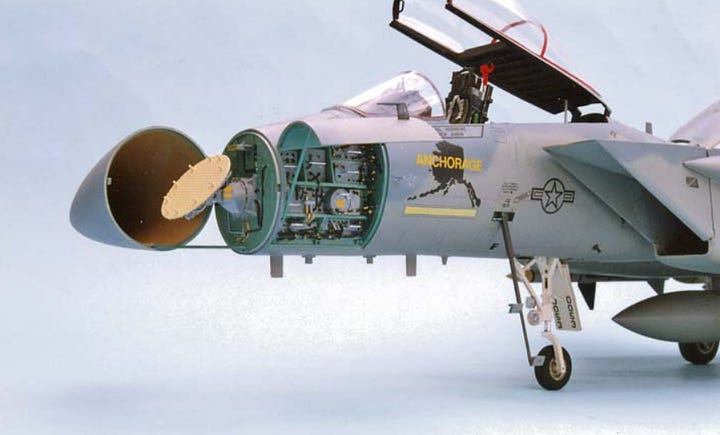
This is because the radar waves simply go through the nose cone as if it wasn’t there, because lighter materials are pretty porous to radar waves. The point being that there is simply no way to get around the fact that small drones will be buzzing and watching you at all times no matter how big of a ‘super power’ you are, and any troop concentration you foolishly expose onto the field will be quickly bombed by a competent foe.
But the key is the next sentence, which I’ll paste again:
This is reducing large-scale engagements and thereby necessitating a concentration and synchronization of effects, rather than a traditional physical massing of troops. In turn, this places an extra burden on command and control, especially when contested by electronic warfare.
This is the crux of it all: in order to circumvent this deadlock, the only way is by creating a highly efficient, fluid and well-trained command and control that can very competently coordinate the various units and ‘effects’ (EW, fires, psych/hybrid, etc.) in a potently synchronized fashion so as to enable advancing ground units to make punctures and breakthroughs in the enemy’s lines by way of the other coordinated systems identifying and suppressing key defensive structures, batteries, etc.
In short, it requires a full spectrum combined arms capability where airforce, divisional artillery, signals/EW troops, and lower command all operate in smooth synchronization to make the advance together. If you’ll recall, this was exactly the chief point I belabored in explaining why the AFU’s first big Leopard/Bradley foray failed in the minefields, and how they weren’t able to synchronize all the required elements in order to suppress Russian defenses (artillery, ATGMs, mine re-layers, etc.), which caused a herky jerky advance that sometimes saw the AFU armor convoys having to “stop and wait” in place for extended periods of time while their forward scouts or drone ISR teams slowly relayed coordinates to fires groups in an attempt to suppress the defenses enough that the armor group can advance without instant destruction.
The problem is Russia still has issues with integration of this sort. It may be better than Ukraine’s, and it’s improving every day, with some sectors and unit pairings / theater commands faring better than others. But there have been cases in the past, particularly during the Kharkov offensive of last year, where horror stories abounded about the lack of communication/coordination between Russian air groups and ground forces, as an example, with Su-25 pilots trying desperately to call troops on the ground with their cellphones in order to figure out who to bomb.
You might wonder how that’s possible when the entire point of this article is to convey Russia’s decades of military brilliance in theorizing these very solutions. The issue lies in the fact that it’s one thing to theorize all this, and a whole different thing to smoothly institute it into your command structures and, most importantly, train and inculcate it into every one of your troops and units. So, while they developed these systems on paper, the actual implementation of it remains patchy—but it’s greatly improving all the time.
One of the other reasons for the patchiness has to do with the technical equipment itself—or lack thereof—rather than personnel training. You see, one of the chief limitations of the Russian armed forces are the communications systems. Some of them are out of date and not up to par with modern digital link standards. We’ve all heard of the infamous cheap $20 Chinese Baofeng radio scandal. But remember—the operative word is some.
This causes obvious issues in coordinating large scale operations. Once again: it’s a sliding scale, not a binary. Russia has some issues in this category, but it’s still one of the most powerful armed forces in the world in this regard. Most NATO countries have even worse issues, like the recently recounted story of German tank units unable to even communicate at all, with commanders forced to open their hatches and shout directions to adjacent tanks as their comms equipment was so poor.
It’s simply something that Russia still needs to work on, a point Putin himself acknowledged during the recent round table where he listed ‘communications systems’ amongst drones and guided ammunitions as things found ‘lacking’ during the SMO.
But as I outlined in detail in the earlier mentioned ISR article, Russia is swiftly improving in this regard as well, as it’s introducing a large variety of network-centric battlefield integration systems like the Strelets-M, Andromeda-D, Planshet-M, and many others, which give commanders the ability to instantly transmit enemy target coordinates to any unit type on the battlefield, be it an artillery battery or even a fighter-bomber like an Su-34 with a corresponding system.
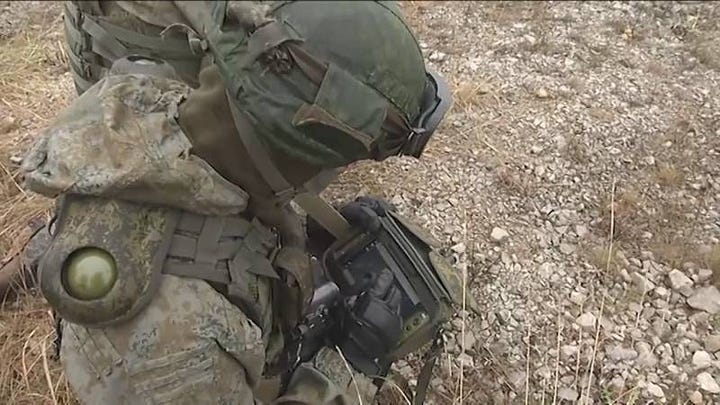
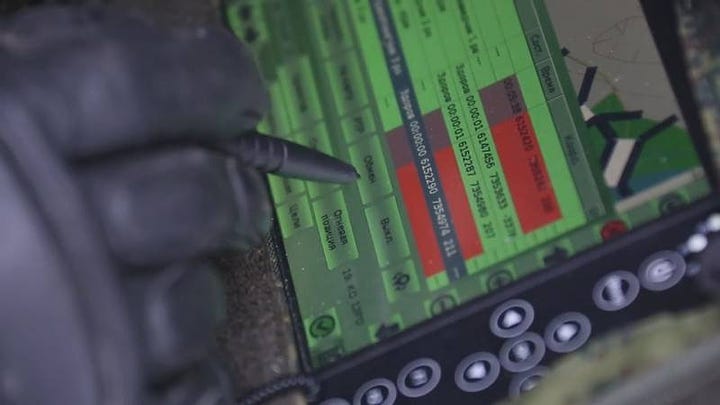
These are exactly the types of systems required to achieve the coordination necessary to break through the deadlock inherent to modern ISR-heavy warfare. If every single unit on the battlefield was fully integrated with each other, where a single click of a finger can promote targets on the screens of every other unit in the theater, then advancement and breakthrough would be simple. Keep in mind, Ukraine too has an array of such systems (which I also discussed at length in my previously mentioned ISR article), like GIS Art, Nettle, Delta, and even several others. But the problem is, they’re mostly artillery-focused and not entirely widespread, not to mention Ukraine has no real airforce to speak of which is a critical component of what we’re talking about.
In general, the Russian army remains ‘uneven’, but so does every other army in the world, most of them even more so than Russia. There are specialized and more elite units within the Russian army which are the most advanced in the world in their given MOS, even far superior to their American equivalents (particularly in the EW department, for instance, where even the U.S. admits Russia has the edge, as I once summarized from their own internal Fort Benning report). But then, on the other side of the theater, Russia will have other units of the same type that are using 1970s equipment simply because the modernizations haven’t made their way through the entire armed forces yet. The reason for this, by the way, is due to this war being the largest scale engagement for Russia since WW2, which means it’s using units that were never meant to be frontline assets, and amounts of troops it hasn’t used in 70 years, which requires dipping into older stock in order to arm these vast amounts of unforeseen troops.
You can see this everywhere: there are artillery units with the latest fully-automated and computerized 2S19M2s and then there are still units rattling around in Gvozdikas or even WW2-era D-20 guns. In normal peacetime, such units with old gear would have been kept in the rear only for training purposes, while the more high-readiness and frontline military districts like the West and South, would have had all the latest stuff.
This means that on some limited fronts, Russia is capable of executing the full measure of the theoretical evolutions outlined in this article, while in other areas they will suffer a relative slog and the units there will likely only be good for maintaining a static defense.
But with the great industrialization initiated by the SMO, Russia is now modernizing at a faster rate than ever before. One can even see this plainly by looking at recent videos of the soldiers themselves: their uniforms and general gear is much improved compared to the start of the SMO, where we still saw many ragtag outfits with cobbled together helmets/armor/camo.
When the modernization catches up with that critical saturation point of the necessary high-tech networked systems, it’s clear that Russia will have turned a corner, and we will see a Russian army like no other. The decades of theorizing and doctrine evolution will have converged with the technological progress necessary to successfully implement these doctrines into practice. And at that point, no other army in the world will have both the institutionalized doctrinal grounding and the technology, equipment, and experience to overcome the great enigma of the modern battlefield.
If you enjoyed the read, I would greatly appreciate if you subscribed to a monthly/yearly pledge to support my work, so that I may continue providing you with detailed, incisive reports like this one.
Alternatively, you can tip here: Tip Jar


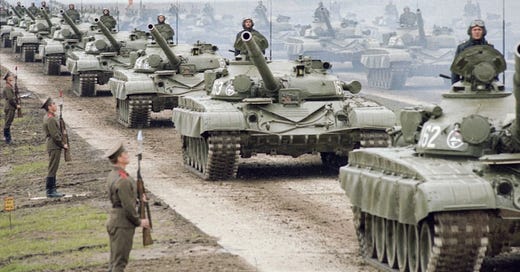


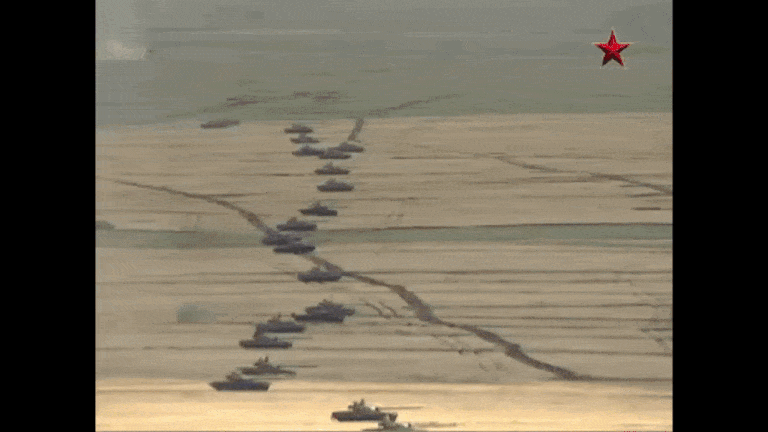

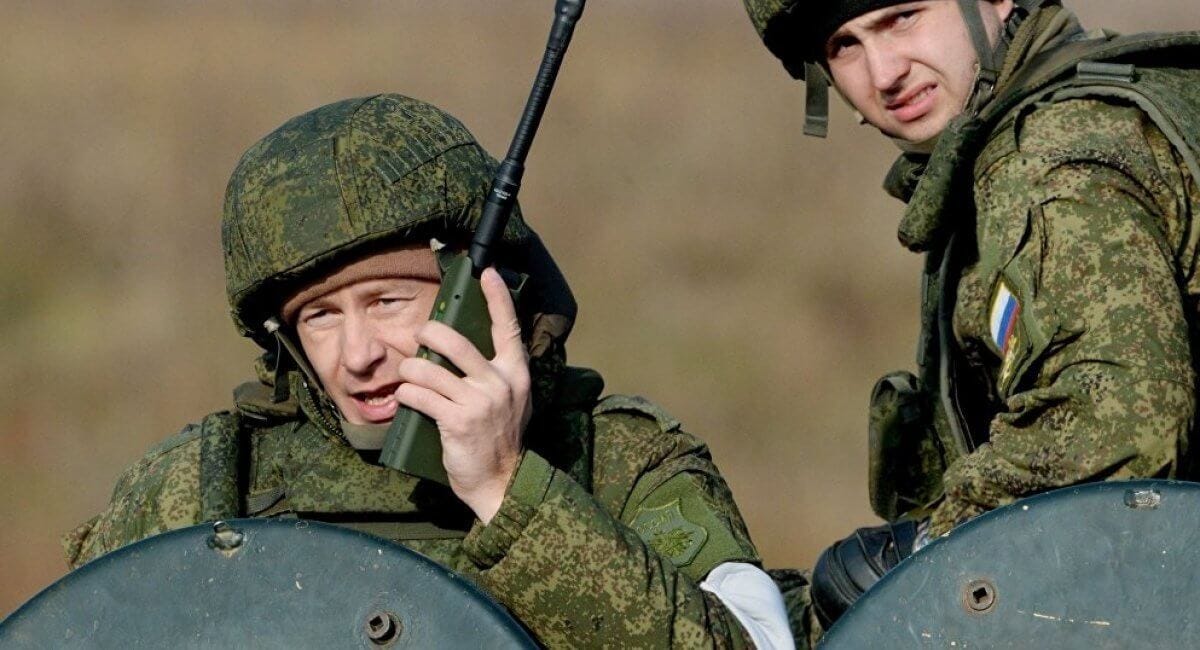

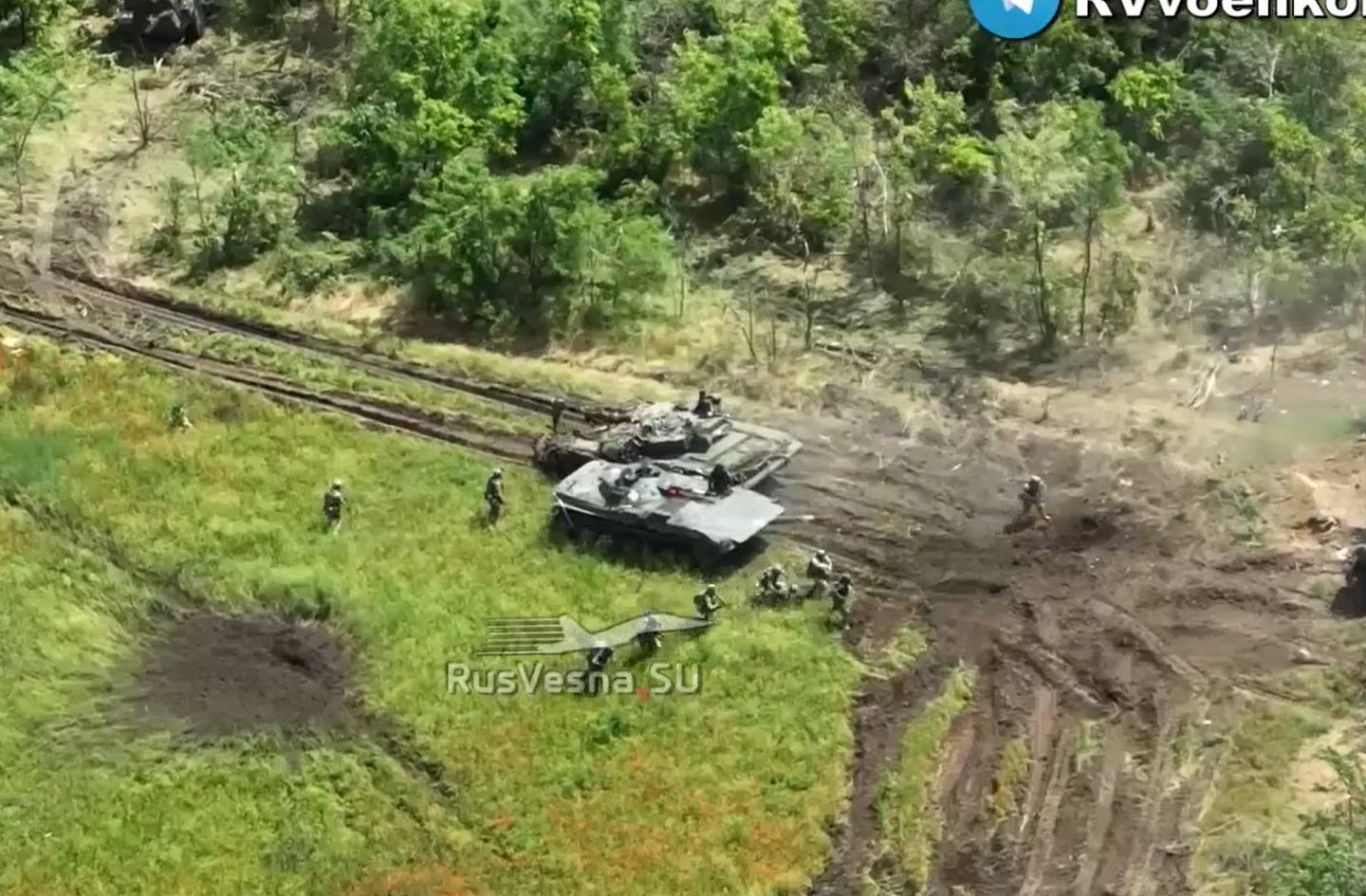
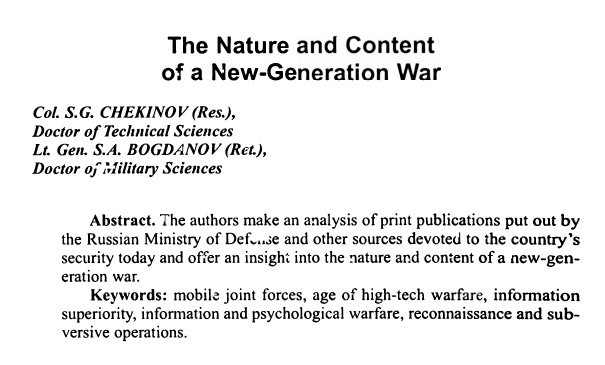
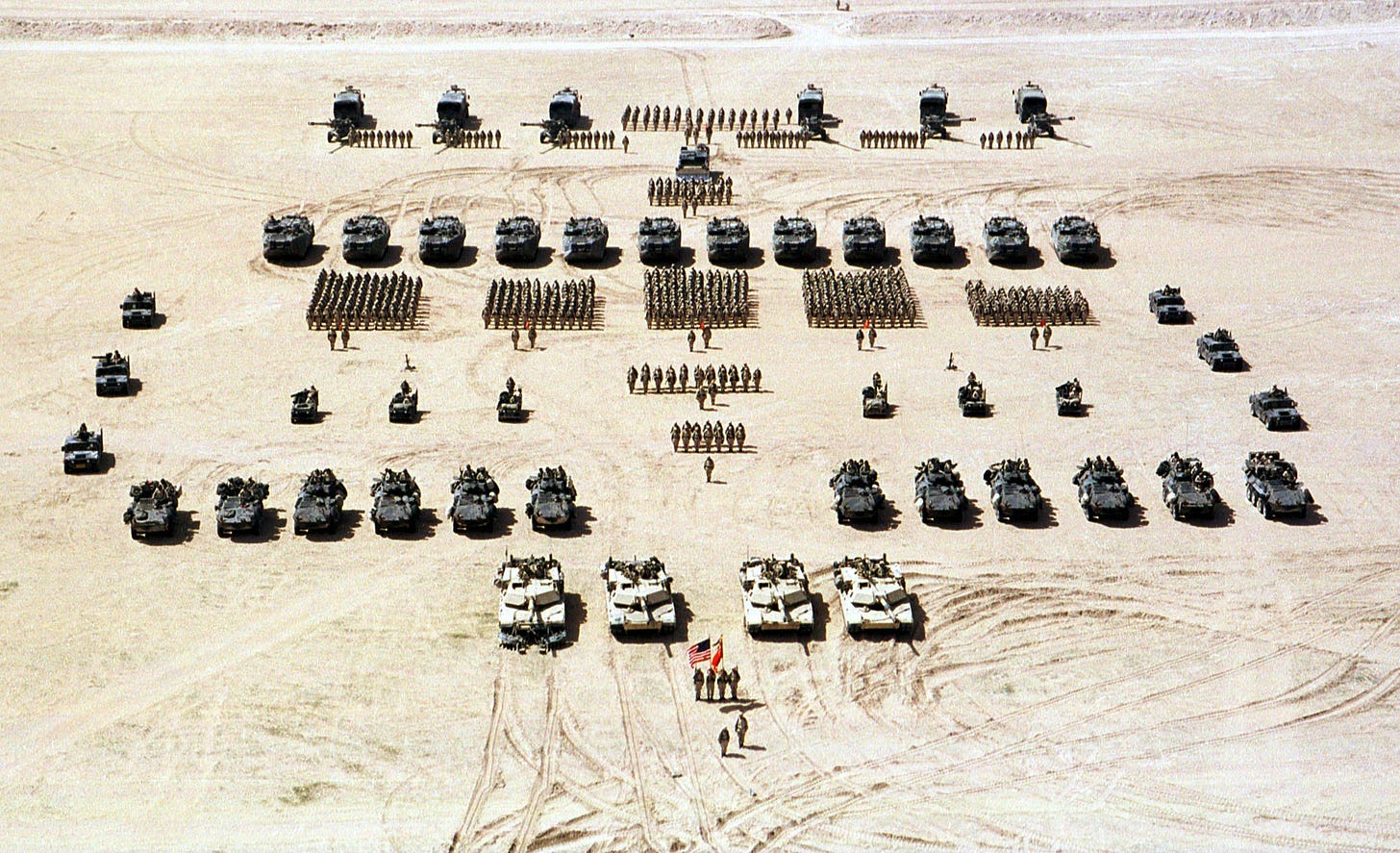
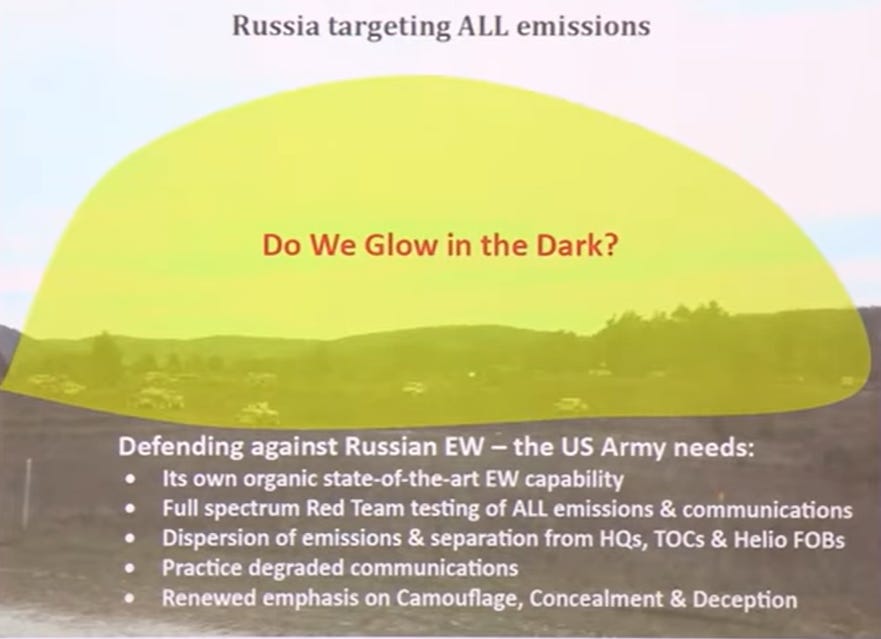
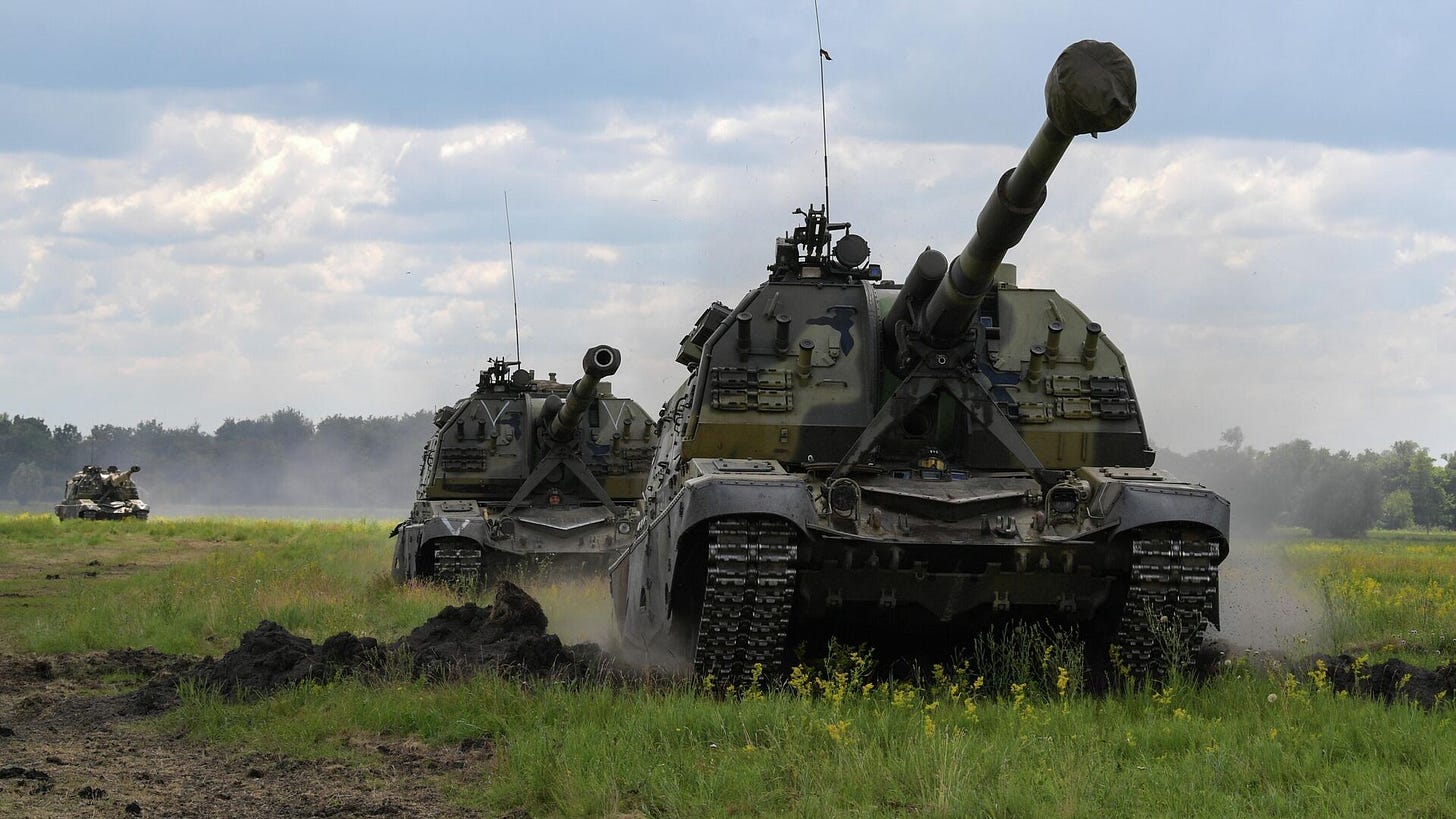
Excellent and interesting as always
Anyone unbiased who wanted to know what is happening in this war would gain a lot from reading this article. Further confirmation for us who read a lot because we care. I expect that one reason why Western Media has been so easily manipulated by the fake narrative is because they're a actor-led culture. Hollywood is not a war expert giving lessons on how to save lives. Bravery is not running to certain death. Foolishness is judging a war like its a movie with an expendable sidekick the hero has to avenge.